Grounding a bathtub in an apartment: why and how to properly ground a bathtub
Due to the fact that electrical appliances in the bathroom are constantly exposed to high humidity, the bathroom is considered one of the most dangerous places in the apartment from a safety point of view. Any electrical device can cause current leakage.
And if someone touches a live object, the consequences can be disastrous. Grounding a bathtub in an apartment is a simple procedure, but it can save a person’s life and health. It is this question that we will consider in our article. Let us examine in detail the reasons why grounding is necessary.
We will also provide detailed instructions on how to ground your bathtub yourself, supplementing the material with visual photos and video recommendations.
The content of the article:
What is grounding and why is it needed?
Before starting work, you need to understand the theoretical part of the issue. What does the very concept of “grounding” mean, is it really so necessary and why is this issue so acute in the bathroom. This knowledge will help you figure out whether you really need to ground the bathtub in your apartment.
Explanation of the concept of "grounding"
Electric current is a rather dangerous thing, especially if handled improperly.Needless to say, when combined with water, completely harmless electrical appliances get out of control and become deadly.
From the physics course we know that current always moves along the path of least resistance. The purpose of grounding is to work in such a way that even if an electrical appliance unexpectedly breaks down, the person who is near it at that moment does not suffer.
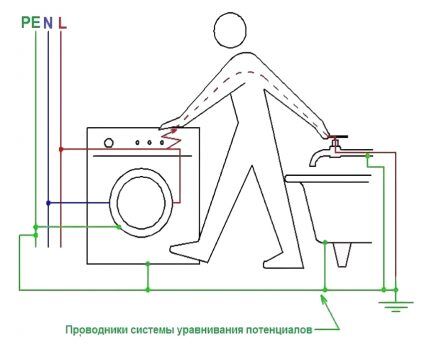
The earth can act as zero potential. This property makes it possible to safely use electricity at home. “Grounding” means connecting the electrical wiring network to the ground with a suitable conductor.
It is often quite difficult to perform such an operation in apartments, especially in high-rise buildings. They use another method - zeroing.
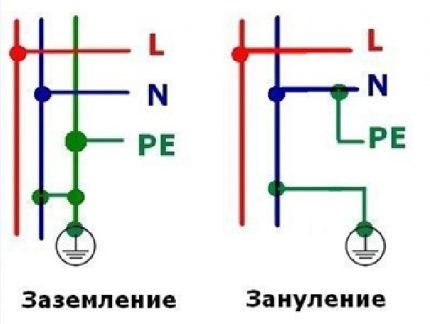
This is a fairly popular method, but there is a significant drawback. The machine does not work instantly. That is, between a theoretical electric shock and knocking out RCD Some time passes, even just a few fractions of a second. If the voltage is high and the path of electric current passes through the heart, even a second can become fatal.
It is much safer to be grounded, although it is more difficult to implement. The potentials in the circuit formed at the moment of breakdown (between phase and ground) are equalized instantly, and nothing threatens the person.
Why do you need to ground a bathtub in an apartment?
Based on the above, grounding bathroom appliances is a common safety measure that should be done by default. Unfortunately, proper grounding is rarely found in modern apartments. Not everyone fully understands what it is and why it is needed in the bathroom.
Previously, when water pipes were exclusively metal, the issue of grounding did not arise at all. Without exception, all the baths were somehow connected to the pipeline, which, in turn, went underground, thus creating the same grounding.
Now steel pipes are being abandoned in favor of plastic ones. Even if you still have a metal pipe, you cannot be sure that the neighbors below have not changed their part of the riser, thus breaking the chain. Therefore, it is better to play it safe and protect yourself and your family.
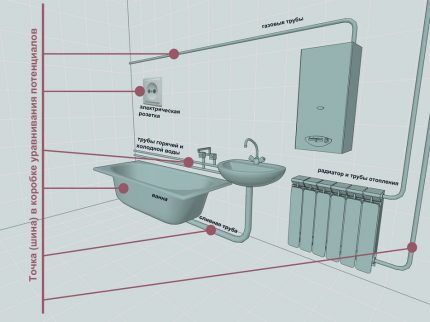
In addition, in those days when many apartment buildings were built, there were practically no electrical appliances in the bathroom. Even a basic socket was rare.
Now in the average bathtub you can count about 5 constantly operating electrical appliances:
- electric water heater;
- washing machine;
- heated towel rail;
- hair dryer;
- electric razor
Any of these and other devices can cause voltage on its body. The consequences can be dire. It is better not to neglect the grounding device even before dangerous situations arise.
Features of grounding bathtubs made of different materials
Steel or cast iron bathtubs are an excellent conductor.It is these models that need to be grounded first. Old-style bowls are connected with a grounding wire to a metal leg. To do this, a hole is drilled in the latter and a special plate is installed - a grounding jumper.
More modern models are already equipped with an overlay on the body - a petal - even at the stage of release from the factory.
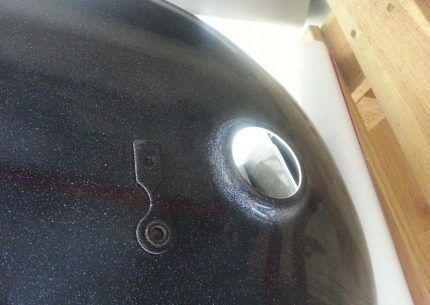
An acrylic bathtub is made of a polymer material, which itself is not a conductor of electric current. However, acrylic tends to accumulate static electricity.
Some models are designed in such a way that the bowl is supported by a steel or aluminum frame, which must be grounded.
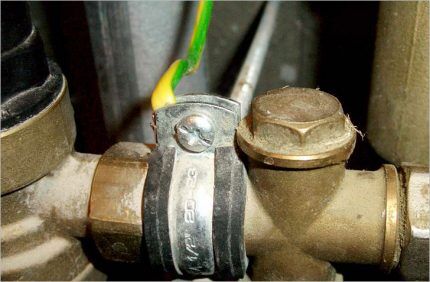
Hydromassage baths or Jacuzzis are equipped with a system of jets through which water is supplied at different pressures. To make the bath work, you need a pump. And it is powered from a 220 V electrical outlet.
In addition to the mandatory rules for connecting this type of bathtub, such as safe installation of sockets in the bathroom (no closer than half a meter from the edge of the bowl and the ground level and protection not lower than IP44), be sure to ground the bath itself, just in case.
DIY grounding instructions
When everything fell into place with theory, it’s time to start practicing. The issue of grounding in an apartment can become a serious problem if the house does not have a grounding loop. But this can be easily fixed if you have the desire and opportunity. Select the right materials and tools, and then start installing the wire.
Step 1 - choosing materials before starting work
First you need to decide what materials to purchase for electrical work. After all, you definitely need to choose the right cross-sectional area of the wire, its type, and not make a mistake with the amount of consumables.
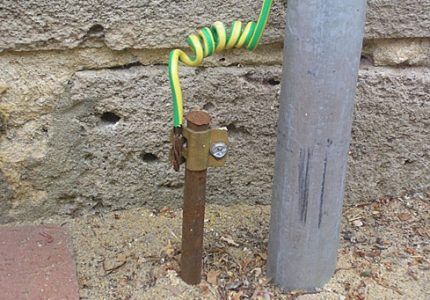
In addition to this basic element, you will need:
- potential equalization box;
- RCD for the required number of Amperes;
- terminals;
- pipe clamps.
The potential equalization box is a plastic compartment in which all branches of the ground wire are connected.
Since it is prohibited to ground objects in series, a separate cable must go from each device or pipe to the potential equalization box (PEC).
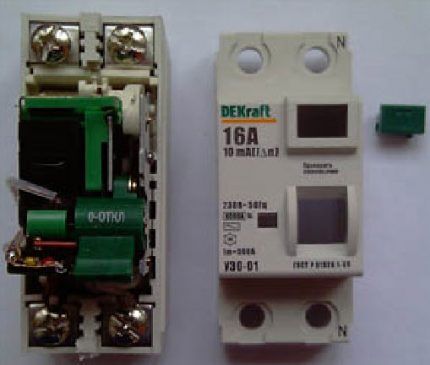
The RCD (residual current device) is not installed in the bathroom. Its place is in the corridor or other dry, safe place. It is advisable to familiarize yourself with possible schemes and rules for connecting RCDs.
For apartments, a 10 or 16 A RCD is most often chosen, but if you have high-consumption electrical appliances, such as an electric oven or a high-performance instantaneous water heater, such protection may not be enough. We advise you to look at practical recommendations on selection of RCD.

Above mentioned terminals - these are special connections that allow you to carefully and “civilly” connect the wire to the bath petal. This type of connector comes in a variety of shapes.
Clamps are needed for those cases when, in addition to the bathtub, you want to separately ground the pipeline.
Step 2 - preparing tools for electrical work
The set of necessary tools for laying grounding in the bathroom is not very different from the standard set of an electrician.
You don’t have to buy anything new or specific, just take care of:
- screwdriver;
- wrench;
- drills and drill bits for metal;
- flashlight;
- tester or multimeter;
- welding machine (optional);
- protective equipment (extremely necessary).
The most common tool in a home craftsman's toolbox is a screwdriver. It is better to perform electrical work with an indicator screwdriver. It has a hidden light in the handle that lights up if you touch a live element with a screwdriver.
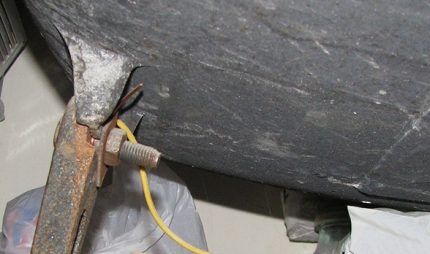
A wrench is needed to tighten the bolts when connecting the ground wire to the metal plates.
A drill will be needed if the manufacturer does not provide a special hole for connecting the cable or the bathtub model is too old.
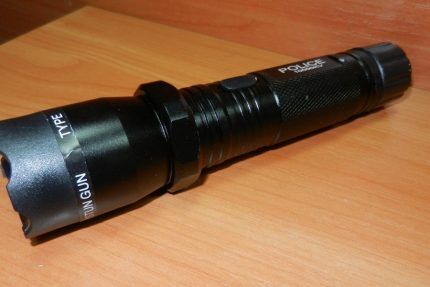
A tester or multimeter is a device that allows you to measure the voltage in a circuit. It is especially important to have one of these devices when you do not know for sure whether your outlet is grounded or not.
You will need a welding machine when you decide to install a grounding loop outdoors.You need to weld a steel structure reliably; if you do not have experience and appropriate skills, a welding machine may not be enough; you will also need a qualified welder.

Before grounding the bathtub in your apartment, prepare tools only with handles made of dielectric materials, additionally check the presence of voltage in the circuit even when the power is turned off, hang a notice on the electrical panel warning about the work so that someone does not accidentally turn on the machine.
Step 3 - laying a grounding bus for the apartment
Ideally, an apartment building should have a common grounding bus to which any resident can connect and ground. In practice, general house grounding is a huge success; it is very rare.
If you are lucky and the management company of your home, the developer or active residents who are aware of the dangers and responsibility of using electrical appliances in the bathroom have installed a grounding loop, you can connect all your dangerous electrical appliances, metal pipes and the bathtub directly to it through the electrical panel on the floor.
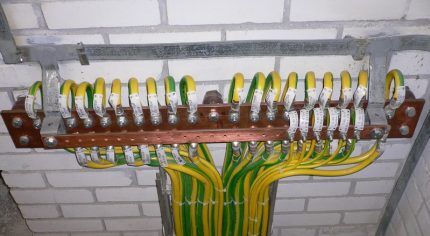
If no one has taken care of your home yet, you will have to do it yourself.
And there are several options:
- ask the management company or city authorities to do the grounding;
- convince other residents and pay for installation from your own pocket;
- take care of your safety and make an individual grounding loop on your own.
In the last two cases, you will need to run a copper wire at least 6 mm2 thick along the entire riser all the way to the basement.
Then, near the house, in an open, preferably fenced and deserted area, a pit is made about 1.5 m deep. Three thick electrodes are placed vertically in this pit - most often rolled steel or fittings are used.
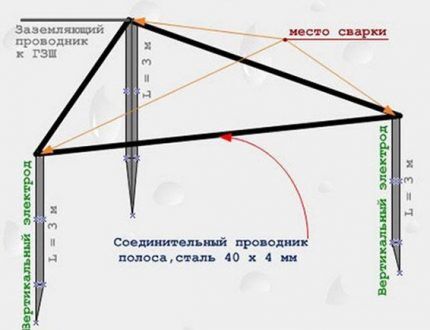
The three racks are connected at the top with a steel strip using a welding machine or a thick wire to form a closed triangular contour.
Then the grounding wire is removed and laid underground in a special protective sleeve. The wire is connected to the metal structure. This creates a common, fairly reliable and durable grounding circuit that can be used by all residents of apartments along the riser.
The stages of installing a grounding loop next to a high-rise building are similar to installing such a loop in a private house. If you still decide to make it yourself, we recommend that you familiarize yourself with useful tips on circuit design and installation.
Step 4 - Grounding all appliances in the bathroom
Once you have verified that your home has a ground and found how to connect to it, the further process will not be difficult.
- Select a location for the potential equalization box. It should be located on a dry wall, at a distance from the bath.
- If the bathtub is new, it should be turned over for convenience. Often people think about grounding when the bathtub is not only installed, but also covered with facing tiles, hidden behind a screen or decorative panel. Then it will be a little more difficult to do the job.
- Decide exactly where the cable will be connected. Find the location provided by the manufacturer. As a rule, this is a plate with a hole, welded or screwed to the body.
- If there is no special grounding point, you need to use a drill. Drill a small hole in the metal part. If it is cast iron, most likely there are ridges at the bottom of the bowl, which should ensure the stability of the structure on the legs. These sagging can be used for grounding.
- Lay the wire along the wall from the connection point to the control panel.
- Using a terminal, connect one end to the plate in the potential equalization box, and the other to the bath body through the drilled hole.
- Connect the PMC to the grounding bus in the electrical panel with a copper wire of sufficient thickness.
- Then you need to check the correct connection and hide the wire. This is done not only for aesthetic purposes, but also to avoid accidentally damaging the cable.
After installation is complete, you need to check the grounding operation using a tester. To do this, connect the phase and the grounded bath. If the tester light is bright, it means that current will flow through this circuit in the event of an accident and will not affect a person.
Conclusions and useful video on the topic
Videos with answers to most popular questions will help you finally close the question of the need for grounding in the bathroom. If it is easier for you to perceive information in video format, this collection will certainly help you.
Why ground a steel bathtub in an ordinary apartment:
How to organize grounding in an apartment building:
How to make grounding in the bathroom:
After all of the above, it becomes clear why ground a metal or acrylic bathtub. Usually this work takes very little time, provided there is a common house grounding. A few simple steps - and your bathroom becomes a safe room without the threat of electric shock.
Are you wondering whether you need to ground your bathtub? Or are you already planning to do grounding, but you have questions that we did not cover in this article? Ask them in the block below this article.
Or do you have theoretical knowledge of bathtub grounding and want to share it with other users? Maybe you noticed an inaccuracy or error in our article? Write to us about it in the comments.




Undoubtedly, a modern bathroom in an apartment is an increased source of danger in terms of an increased likelihood of electric shock. Therefore, the installation of all electrical devices must be carried out in accordance with all the rules. Sockets are only waterproof, lamps are sealed. Be sure to install an RCD and a circuit breaker for wiring to the input of the bathroom power lines. If there is no grounding in the house, do not be lazy to drive the fittings into the ground and ground at least your apartment through it.
To use your bathtub safely, be sure to ground it. Of course, this will require some effort on your part, because in modern multi-storey buildings with common grounding, things are not the best. The use of water pipes is unreliable; the place where the clamp is applied gradually rusts, it gradually weakens, and when heated, it bursts. Or someone inserted a plastic pipe.
First of all, inspect the electrical panel on your floor. If you see a bare thick wire, rejoice, this is the general grounding. Lay a three-core cable into the apartment, and then it’s a matter of technology. If not found, cooperate with your neighbors, lay grounding wires on all floors and install terminal blocks on each floor. In the basement, inspect the general electrical panel; according to the rules of the PUE (GOST for electricians), it must be grounded! Otherwise, drive three metal rods into the ground, scald them with a strip, weld a connecting bolt, connect the general grounding wire, and at the same time the electrical panel. And you will be happy.
How will grounding the bathtub save you from a breakdown on the body of a razor or hair dryer?
It will save you if some goat has grounded his electrical network to the water supply and it breaks through to his body. Such freaks are especially common among radio amateurs and electronics technicians.
Then, when you turn on the water, you get an electric shock; such individuals usually do not have an RCD, all live parts, incl. Water from a tap conducts current and is at potential.
Good day, Andrey.
The topic of bathtub grounding really has to do with potential equalization.For example, you have a metal bathtub, metal water pipes, a metal drain into the sewer.
If there is no potential equalization system, then getting under the shower can result in an electric shock. This is the case when the “goats” mentioned in the posts arrange the local “ground” through the water supply.
What will save you, I note, in this case, is not the grounding of the bathtub, but the metal connection of the bathtub, drain pipe, and water pipes. If the house is operated according to the PUE, then all the pipes at the “level” of the input switchboard are connected to a single bus connected to grounding.
A very dangerous case is when the bathtub is grounded, and the washing machine, standing on insulated legs, has reduced electrical insulation. Touching the body of the washing machine and the body of the bathtub at the same time can end sadly. Similarly in the kitchen - the combination “refrigerator with poor insulation near the sink” is also dangerous.
However, most problems are removed by an RCD - read the section of this site “RCD and automatic machines».
Good afternoon, Vasily!
Regarding your answer regarding the nearby washing machine and bathroom.
I am planning a renovation in the bathroom, after which we plan to install the washing machine next to the bathroom (more precisely, right next to the bathroom), because... The current placement is very inconvenient. Now there is no grounding in the apartment at all, I plan to make a grounding loop in the bathroom, the first floor allows it. So the question is whether grounding the bathtub and the outlet of a nearby washing machine will ensure safety, or whether additional measures are needed.
This question worries me a lot.
Good afternoon
What to do if the bathtub and washing machine are installed next to each other and the bodies may touch?
Excellent photo on grounding a pipe.Metal ring through the gasket.
Probably done by a radio amateur.
Why are you attracted to radio amateurs and electronics? Doesn't it dawn on your chicken brains that if a person understands electronics, then he is even more versed in ELECTRICAL?!
Not necessary. Nowadays, radio amateurs, ala smartphone repairmen, just need to know the purpose of electronic components, calculate the simplest circuits using two formulas, such as capacitor-resistor, and where to get serviceable parts. And they can wear an antistatic bracelet only because it is supposed to, without understanding the essence of its work.
Sergey, I completely agree with you. I am a radio engineer by profession, but I had to work as an electrician, and an electronics engineer, and a CNC machine operator, and a television technician, and many others. I have seen a lot of things. For example, the chief electrician of a military plant, for which we took exams, himself neglected the Rules and was killed by an explosive voltage discharge in the switchgear. Two drunk electricians bet a bottle of vodka that one of them would take a bare live wire (which he had done several times before). The workshop energy worker interrupted their hands. This time he was electrocuted. The power engineer was removed from his position and was no longer allowed to work in management. The chief power engineer of the plant still could not understand why the magnetic washer was humming. He had no idea that it was not a direct current flowing through it, but a pulsating one. I can continue examples ad infinitum. But I will stop at this.
A metal clamp presses the ground wire wrapped in several turns through the gasket. At first I didn’t understand either.
What if there is not a single metal part in the bathroom? With the exception of the mixer and radiator, but the connections to them are made of polypropylene pipes. There is only one electrical outlet for the washing machine. Does it make sense to ground the bathtub?
But what if the grounding wire going to the apartment in the floor panel is disconnected, for example, the contact will be lost. On the busbar in the shield, all grounding wires are connected. If there is a breakdown on the case on one of them, potential will appear on all other cases. What to do?
In this case, when the bath receives an electric shock, the RCD of the group in which the “breakdown” occurred will trip, of course, if it is there)